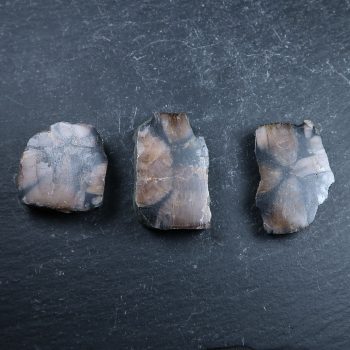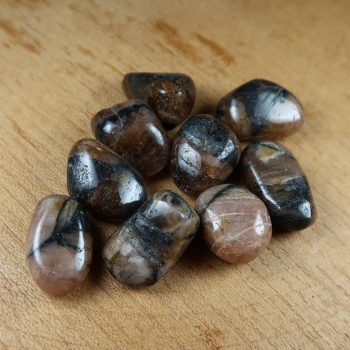Chiastolite
Chiastolite is a variety of Andalusite which carries a distinct ‘cross’ pattern, formed by inclusions of black Carbon.
As it naturally has an extremely unusual pattern, it is often used for jewellery making. It was distributed by pilgrims in the 16th century due to this pattern.
Showing all 2 results
Appearance, Uses and History
Chiastolite is a variant of opaque Andalusite with a very distinct cross shaped inclusion of Graphite.
During the 16th century this stone was distributed around Europe by pilgrims returning from Spain due to its obvious symbolism related to the Christian faith.
Locales
The best locale for Chiastolite is in Spain, the Asturias region.
It also occurs in Australia, China, France, Portugal, and the USA.
Mineralogy
Hazards and Warnings
Almost all rocks, minerals (and, frankly, almost all other substances on earth) can produce toxic dust when cutting, which can cause serious respiratory conditions including silicosis.
When cutting or polishing rocks, minerals, shells, etc, all work should be done wet to minimise the dust, and a suitable respirator or extraction system should be used.
Translations
Arabic:
Hindi:
Portuguese:
- quiastolito
Bengali:
Indonesian:
Punjabi:
English:
Italian:
Russian:
French:
Japanese:
- キアストライト
Spanish:
- quiastolita
German:
- Chiastolit
Korean:
Thai:
Gujurati:
Mandarin and Traditional Chinese:
Urdu:


